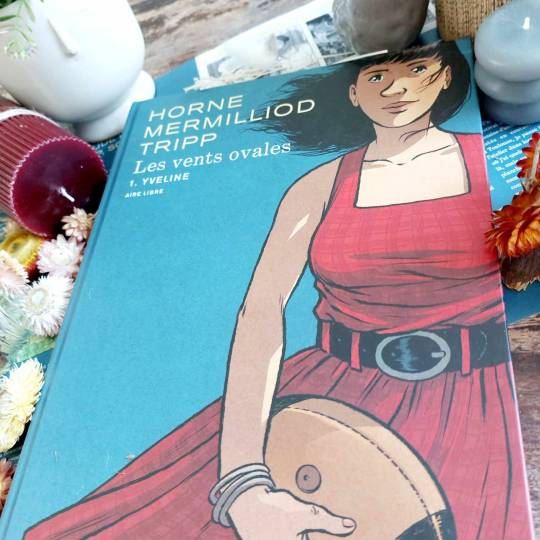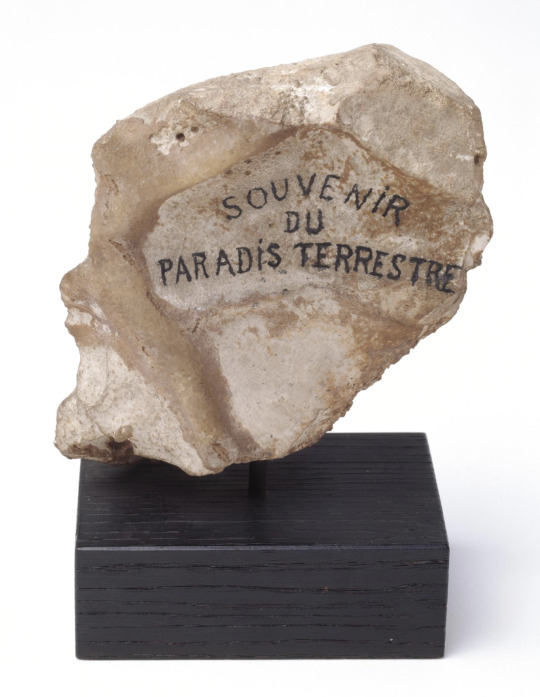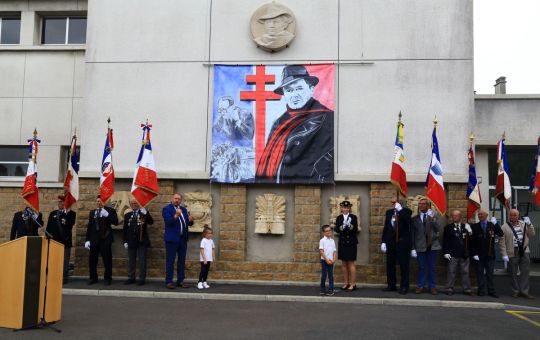#la france libre
Explore tagged Tumblr posts
Photo

“BENEATH THE SEA THE SURCOUF SPAT TORPEDOES, THROUGH THE AIR HER FLEDGLING PLANE HURLED BOMBS; NOW SHE IS LOST,” Toronto Star. April 18, 1942. Page 4. ---- TWO EIGHT-INCH GUNS the Surcouf carried. She was the heaviest armed submarine afloat. She had 10 torpedo tubes and an anti-aircraft battery.
SAILORS CHOP ice away from the unique gun carriage beneath the conning tower. The Surcouf's crew was the only one which put up a scrap, killing one British sailor, when the Royal Navy took over units of the French fleet. Since then it's been Free French, a staunch ally.
SHE CARRIED A SEAPLANE, even, the extraordinary Surcouf. This is the entrance to the "hangar" into which the pontoon-equipped plane taxied after reconnaissance.
AS LARGE AS A SURFACE warship's is this wardroom. in the Free French submarine. The sleeping quarters were said to be as large and comfortable as those of the most modern train.
#surcouf#forces navales françaises libres#croiseur sous-marin#lost at sea#shipwreck#world war II#submarine#submarine warfare#france libre#free french#la france libre
2 notes
·
View notes
Text

Le Général Charles de Gaulle au micro de la BBC à Londres - 30 octobre 1941
Cette photographie est postérieure au 18 juin 1940 car le Général porte sur sa vareuse l'insigne à croix de Lorraine, adoptée comme emblème de la France libre en juillet de la même année. Comme il n'existe aucun cliché de l'appel du 18 Juin, cette photo est souvent utilisée comme illustration du célèbre discours radiodiffusé.
#WWII#les femmes et les hommes de la guerre#women and men of war#figures historiques#historical figures#charles de gaulle#appel du 18 juin#appeal of 18 june#la france libre#free france#free french#londres#london#angleterre#england#30/10/1941#10/1941#1941
1 note
·
View note
Text
i really love how determinate macron is to destroy our exams
we have our exams on monday, the government don't care about us, took decisions on tuesday for the friday and don't seems to realise that every student hates him right now
#on est dans la merde et il n'en a rien à faire#au moins après on sera libre pour brûler la france#upthebaguette#president macron#french stuff
10 notes
·
View notes
Text
Les vents ovales: T1. Yveline de Horne, Mermilliod et Tripp
Restons en France ! Aujourd’hui, ma suggestion littéraire t’emmène dans le sud-ouest, où l’accent chantant célèbre la chocolatine, même si nous savons tous qu’il s’agit plutôt d’une couque au chocolat. Changement de format aussi puisque je te propose une bande dessinée. Publiée chez Dupuis en mai dernier, elle marque le début d’une trilogie intitulée « Vents ovales ». N’hésite pas à te procurer…

View On WordPress
#2024#20e siècle#Adolescence#amitié#Amour#Années 60#Aude Mermilliod#Bande dessinée#Bande dessinée adulte#Classes sociales#Collection Aire libre#Editions Dupuis#Famille#France#Horne#Les vents ovales#Littérature française#Mai 68#Politique#Révolution sociétale#Rugby#Société#Sud-ouest de la France#Trilogie#Tripp#Vie de village#Village
0 notes
Text
Philippe de Gaulle (1921 - 2024)
© Serge Philippe Lecourt, Philippe de Gaulle, 1994. L’Amiral de Gaulle, fils du Général, est mort aujourd’hui à l’âge de 102 ans. Philippe de Gaulle serait le dernier compagnon de la Libération et reposerait donc au Mont Valérien, si son père lui avait décerné cette décoration… Ce qu’il refusât, pour ne pas donner l’impression qu’il bénéficiait d’un passe-droit. © Serge Philippe…

View On WordPress
#Bayeux#Carlton Gardens#Compagnon de la Libération#De Gaulle#France combattante#France Libre#général de gaulle#guerre#marine#Maurice Schumann#Philippe de Gaulle#Résistance#Seconde guerre mondiale
0 notes
Text
BD et recherches...

View On WordPress
#2e DB#Argentan#Armée française#Ecouché#Histoire militaire#La Nueve#Les carnets de route d&039;un croisé de la France libre#Logistique#Poche de Falaise#Raymond Dronne#Régiment de marche du Tchad#Seconde guerre mondiale#Témoignage
0 notes
Text




Keith Haring preparing for the exhibition "5/5 Figuration Libre, France/USA " at ARC Musée d'Art Moderne de la Ville de Paris in December 1984.
Photos by Tristan Jeanne-Valès
380 notes
·
View notes
Text


Mode-palace : album mensuel des dernières créations parisiennes. No. 7, juillet 1904, Paris. Planche coloriée 831. Costumes de promenade. Bibliothèque nationale de France
Première toilette, en soie souple grise à rayures noires satinées. Jupe froncée aux hanches et coulissée sous de petits gansés. Boléro froncé, très court, à empiècement plissé, rayé de petits gansés de même soie ; épaulettes piquées et boutonnées. Revers et haute ceinture-corselet, en soie cerise à pois blancs. Boutons en soie cerise. Chemisette en guipure sur filet. Manches très bouffantes, volantées d'alençon. Ombrelle rose, incrustée de guipure sur filet. Capeline d’italie, couronnée de roses et de liens de tulle vert.
First ensemble, in soft gray silk with black satin stripes. Skirt gathered at the hips and tucked under small braids. Gathered bolero, very short, with pleated yoke, striped with small braids of the same silk; stitched and buttoned shoulder pads. Lapels and high corselet belt, in cherry silk with white polka dots. Cherry silk buttons. Guipure shirt on mesh. Very puffy sleeves, ruffled with alençon. Pink umbrella, inlaid with guipure on mesh. Italian capeline, crowned with roses and green tulle ties.
Métrages: soie rayée, 15 mètres; soie cerise, 1 mètre; dentelle, 3 mètres.
—
Seconde toilette. — Robe tailleur, en grosse toile blanche, garnie d'une broderie "de cerises et feuillage" sur toile jaune clair. Jupe à empiècement plat, avec plis pris dans l'empiècement et libres du bas. La jupe est garnie de deux plis "religieuse", s’arrêtant au tablier. Boléro fermé par des boutons de toile blanche. Manches volantées d’alençon. En colure en vieux venise. Chapeau en paille de bois, blé, orné de satin cerise et d’un gros bouquet de cerises, avec feuilles formant tout le fond du chapeau. Ombrelle ornée de dentelle.
Second ensemble. — Tailored dress, in large white canvas, trimmed with “cherry and foliage” embroidery on light yellow canvas. Skirt with flat yoke, with pleats caught in the yoke and free at the bottom. The skirt is trimmed with two "religious" pleats, ending at the apron. Bolero closed with white canvas buttons. Ruffled alençon sleeves. In old Venice color. Hat in wooden straw, wheat, decorated with cherry satin and a large bouquet of cherries, with leaves forming the entire bottom of the hat. Umbrella decorated with lace.
Métrages: toile, 6 mètres; dentelle, 2 mètres.
#Mode-palace#20th century#1900s#1904#periodical#fashion#fashion plate#color#description#bibliothèque nationale de france#dress#gigot#parasol#devant et dos#july color plates#one color plates
66 notes
·
View notes
Text

"Prince in Rio," Kingston Whig-Standard. June 26, 1942. Page 2. ---- Prince Ernst von Starhemberg, former Austrian vice-chancellor, arrives in Rio de Janerio from the Belgian Congo, where he was associated with Free French before break with General de Gaulle.
[AL: He broke with the Allies because they were allied to the Soviet Union. von Starhemberg was one of the founders of 'Austrofascism,' whatever his opposition to Hitler. Hilariously, he died from a heart attack while trying to hit a photographer for a left-wing newspaper with his cane.]
#rio de janeiro#belgian congo#la france libre#free french#france libre#austrofascism#ernst von starhemberg#anti-nazism#pro-authoritarian#austrian history#exiled#world war ii
0 notes
Photo

Des soldats français du 12e Régiment de Chasseurs d'Afrique de la 2e Division blindée débarquent sur la plage d'Utah Beach avec en tête le Sherman 'Ile-de-France' – Bataille de Normandie – 2 août 1944
©National Archives and Records Administration – 111-SC-199797
#WWII#Opération Overlord#Overlord#Bataille de Normandie#Battle of Normandy#Armée française de la Libération#Forces Françaises Libres#French Liberation Army#FFL#Free French Forces#12e Régiment de Chasseurs d'Afrique#2nd Armored Division#Char#Tanks#Char moyen#Medium tank#M4 Sherman#Sherman Ile-de-France#Utah Beach#Manche#Normandie#Normandy#France#02/08/1944#08/1944#1944
35 notes
·
View notes
Text
Camille Desmoulins and Antoine-François Momoro


Antoine-François Momoro Camille Desmoulins
I couldn't say exactly how, but I have the impression that the printer-bookseller Antoine-François Momoro and the pamphleteer Camille Desmoulins had very opposite paths and were very different despite having similarities, if you know what I mean. Camille Desmoulins was a republican from the start, while Momoro was cautious on the matter and hesitated to publish Desmoulins' pamphlet "La France Libre" in June 1789, only releasing it on July 17, 1789. However, Momoro increasingly engaged in the revolution, eventually becoming one of its key figures and a regular at the Cordeliers Club. He was arrested after the Flight to Varennes, having signed the Champ de Mars petition. Desmoulins, on the other hand, had to go into exile. In this regard, they shared the common ground of being among the harshest critics of the monarchy, although Desmoulins had been vocal much earlier, opposing the property-based suffrage in 1789 and circulating 3,000 copies of his journal "Les Révolutions de France et de Brabant." During the Varennes episode, Momoro ensured that many issues of the Cordeliers Club Journal, which became virulent towards the king due to his escape, were distributed.
Both Camille Desmoulins and Momoro participated in the events of August 10, 1792. While Desmoulins left his mark as a key figure of July 14, 1789, Momoro, alongside Mayor Pache, inscribed the words "Liberty, Equality, Fraternity" on public buildings in the summer of 1793. Both played roles in the expulsion of the Girondins. Desmoulins was elected to the Convention, whereas Momoro, though not elected, played a significant role in the Paris Commune, overseeing supplies and soldier morale, among other tasks. He recruited volunteers from various departments and regions and was sent to Vendée alongside Charles Philippe Ronsin. Both men remained actively involved in what was considered a faction until the end, in contrast to their leaders Danton and Hébert, who were less ardent or coherent (although there were no real leaders, if you understand my point).
Their wives played more significant political roles alongside their companions than often portrayed in films. Lucile Desmoulins' journal shows her as a fervent critic of the monarchy, writing dark texts about Marie-Antoinette, approving the King's execution, and defending Camille when the future Marshal Brune asked him to temper his critiques in "Le Vieux Cordelier." Sophie Fournier, Momoro's wife, played a crucial role in her husband's dechristianization campaign, representing the Goddess of Reason armed with a pike at each ceremony (when you consider the struggle of the women of the Revolution to bear arms, in my opinion, it only demonstrates her great determination ). Both Momoro and Desmoulins had only one son from their marriages, and their wives were subject to sexist attacks, similar to Manon Roland, Louise Gély, Marie Françoise Goupil, and even Marie-Antoinette.
However, their paths diverged significantly. Initially cautious, Momoro became increasingly revolutionary, ultimately considered an ultra-revolutionary, while Desmoulins became more moderate. Momoro began to advocate for property rights redistribution, a stance not shared by Desmoulins or many Montagnards, who were moderate on this issue. Momoro supported de-Christianization, while Desmoulins opposed it. Momoro called for harsher measures against counter-revolutionary suspects, whereas Desmoulins, in "Le Vieux Cordelier," called for leniency (except for approve the mock trial of the Hébertists) and advocated for the mass release of counter-revolutionary suspects, many of whom were innocent. During the harsh winter of 1793-1794, Momoro prioritized the suffering of the Parisian masses, a concern Desmoulins did not share.
Despite this, Momoro and many considered Hébertists were sent to the guillotine. It is said that Momoro died bravely, like most of his colleagues except Hébert (his bravery was remarkable given that his wife Sophie was arrested ten days after him, and he knew she could die, yet he refused to show fear in public). Desmoulins, calm when preparing for death, panicked when Lucile was arrested (as unjustly as the arrests of the Hébert and Momoro wives) and expressed his despair all the way to the scaffold. The most horrifying part is that Desmoulins and Momoro learned of their wives' arrests the day before their execution.
My personal reflections: Honestly, I believe there is a golden legend about Camille Desmoulins, which he does not deserve, and a black legend about Momoro's faction, which is also undeserved . As I mentioned in this post https://www.tumblr.com/nesiacha/744960791081631744/the-difference-in-treatment-between-the-indulgents?source=share, in my eyes, Camille Desmoulins is highly overrated. While I do not deny his talents, I do not think he was fit for great responsibilities, unlike men he mocked, like Ronsin, Saint-Just, or Momoro, who worked tirelessly during the revolution's most challenging period. I must say in my eyes that once Desmoulins became a Convention deputy, he seemed to rest more than other revolutionaries. Consider Sonthonax, labeled a Girondin, who accepted a mission to Saint Domingue to better fight against colonizers who denied equal rights between people of color and whites, or Condorcet, who worked with Carnot on women's education with Pastoret and Guilloud, or Charles Philippe Ronsin. Many members of the Committee of Public Safety had grueling schedules in addition to their missions. Other Convention deputies, unlike Desmoulins, were sent on missions, such as Charles Gilbert Romme (and many others). While Desmoulins advocated leniency in "Le Vieux Cordelier," he approves the mock trial that led to the Hébertists' guillotining and said nothing about their wives' arrests (perhaps he planned to call for their release to be fair, but I don't know). Besides being partly responsible for the fall of the Brissotins, he remained silent on the illegal harassment Jacques Roux faced, leading to his suicide, and once said he understood the need to curb liberty for the people's salvation. Nonetheless, Camille Desmoulins should never have been arrested, let alone executed, as he only wrote articles.
In comparison, Momoro, a victim of a black legend, was clearly more honest about following a consistent line. Initially more cautious than Desmoulins in 1789, he ultimately advocated for more social rights. Despite not being elected to the Convention, he played a significant role in the Paris Commune, carrying out various missions during the revolution's most challenging period, from late 1792 to early 1794. During the Convention's invasions, he was among those who demanded vital laws for the revolution, such as the maximum or the revolutionary army's levy. His attempted insurrection was mainly due to the severe suffering of the Parisian masses in the winter of 1793-1794 and the frequent attacks on the Hébertists by the Convention (the arrests of Ronsin and Vincent in 1793), while dubious characters like Danton were free. Momoro was never rehabilitated, unlike Desmoulins, who was falsely accused of sabotaging supplies and destroying his reputation by accumulating 190,000 livres in cash, although he always refused to elevate himself, leaving behind only 26 livres and 400 livres in assignats. As Mathiez Albert, a historian harsh on Robespierre's opponents, said, "One of the main leaders of this Hébertist party, who first tried to translate and represent the popular aspirations against the wealthy bourgeois of the Convention [...] He died poor, as he had lived."
However, Momoro also had his faults, and Desmoulins was right on some points. Nothing is entirely black or white, especially among revolutionaries. The dechristianization campaigns often caused problems for the French Revolution. I understand the anger of incorruptible revolutionaries like Momoro, given the religious intolerance of that time, but intolerance cannot be fought with more intolerance. These campaigns also alienated many French people.
Moreover, if Desmoulins had dubious political allies in Danton, Momoro could be worst. He counted as an ally the horrible Nantes drowner, Carrier (Momoro didn't drown people by the way, but still a bad point for him...). Many French Revolution characters made alliances with dubious figures (like Robespierre, who knew the criticisms against Danton were well-founded but largely allied with him until a certain point), but it's still a big no for me for the alliance with Carrier. Not with one of the most hateful characters of the French Revolution. His last insurrection attempt, which led to his guillotining, was understandable, but the Convention was at a critical point and could not afford a new insurrection. Unlike Hanriot and Chaumette, he was not lucid enough on this point. He should have been more lenient with the suspect laws. Plus let's not forget that the faction call hebertist who after denunce the faction call enragés took them petition.
Even if I am harsh on Camille Desmoulins, I must acknowledge his great courage and contributions to the French Revolution, and like Momoro, he never betrayed his principles. Moreover, I fully agree with him on press freedom and often highlight his reasoning on freedom of expression. It's worth noting that Camille Desmoulins' father died shortly after his son's execution, heartbroken by his loss, just as Momoro's mother, a servant in Besançon, died a week or two after her son's death. Regardless of what one might say, both revolutionaries earned the right to be considered important figures in the 1789-1794 period.
I would like to end with two phrases these two revolutionaries reportedly said shortly before their deaths:
Momoro, during his condemnation: "I am accused, I who gave everything for the Revolution!"
Camille Desmoulins in jail : "I had dreamed of a republic that everyone would have adored."
P.S.: I have searched everywhere for a biography of Sophie Fournier, Momoro's wife. I found it in PDF and French, but I don't know its value.
Here is the link : https://www.sh6e.com/images/publications/Lettre_d_information/2023_05_Lettre_info_Sh6.pdf
#frev#french revolution#camille desmoulins#lucile desmoulins#momoro#sophie momoro née Fournier#cordeliers#hébertistes#indulgents
36 notes
·
View notes
Text

S'envoyer en l'air - Free as a bird
Vol au-dessus de la citadelle de Besançon (Doubs, France)
Il est libre Max... (bon anniversaire !!)
#Parapente#paragliding#free as a bird#besancon#boucle#besac#parapeto#doubs#citadelle#vauban#unesco#s'envoyer en l'air#il est libre max#photographie aerienne#franche-comte#voler#vol#flying
37 notes
·
View notes
Text

André Breton (1896, France - 1966, France) | Souvenir du paradis terrestre, 1953
Le mur de l’atelier d’André Breton, entré par dation au Musée en 2003, évoque la seconde pièce de l’appartement de la rue Fontaine à Paris, occupé par le poète, de 1922 à sa mort en 1966. Les 212 œuvres d’art et objets qui y sont regroupés rappellent l’esthétique défendue par Breton dans ses écrits et à travers sa collection. Il n’a cessé de l’enrichir, guidé par « un irrésistible besoin de possession », qu’il attribuait au désir de « s’approprier les pouvoirs des objets » ayant suscité en lui surprise et interrogation. Autour des chefs-d’œuvre des artistes qu’il a soutenus (Notre avenir est dans l’air, 1912, de Picasso, LHOOQ, 1919, de Picabia, Tête, 1927, de Miró, Boule suspendue, 1930-1931, de Giacometti, La Boîte-en-valise, 1935-1941, et Coin de chasteté, 1954/1963, de Duchamp), sont soigneusement accumulées des pièces en résonnance avec sa poétique de « l’œil à l’état sauvage, œil premier, libre de toute entrave » : des tableaux, des masques et des objets océaniens, précolombiens et nord-américains, ainsi que des objets trouvés, des objets populaires, des pierres, des racines, des boîtes de papillons.
Brigitte Leal
Source : Extrait du catalogue Collection art moderne - La collection du Centre Pompidou, Musée national d’art moderne , sous la direction de Brigitte Leal, Paris, Centre Pompidou, 2007
156 notes
·
View notes
Text
Cérémonie d'hommage à l'école Jean Moulin
© Serge Philippe Lecourt Le 28 juin 2023 s’est déroulée une cérémonie en hommage à Jean Moulin, grande figure de la Résistance. 250 personnes environ étaient réunies dans la cour de l’école Jean Moulin à Vire Normandie. © Serge Philippe Lecourt A l’occasion du 80e anniversaire de son arrestation par la Gestapo et de sa disparition le 8 juillet 1943, les élèves avaient préparé une exposition…

View On WordPress
#1943#Albert Leclerc#Caluire#Compagnon de la Libération#Conseil national de la résistance#France Libre#héros de la Résistance#Ingrid Gosselink#Jean Moulin#Léonard Gille#maquisards#Marc Andreu Sabater#porte-drapeaux#Résistance#Seconde guerre mondiale#Stéphanie Lefort#Vire Normandie
0 notes
Text

I decided to try this but for the girlies instead.
Are you sure want to click on ”keep reading”?
For Pauline Léon marrying Claire Lacombe’s host, see Liberty: the lives of six women in Revolutionary France (2006) by Lucy Moore, page 230
For Pauline Léon throwing a bust of Lafayette through Fréron’s window and being friends with Constance Evrard, see Pauline Léon, une républicaine révolutionnaire (2006) by Claude Guillon.
For Françoise Duplay’s sister visiting Catherine Théot, see Points de vue sur l’affaire Catherine Théot (1969) by Michel Eude, page 627.
For Anne Félicité Colombe publishing the papers of Marat and Fréron, see The women of Paris and their French Revolution (1998) by Dominique Godineau, page 382-383.
For the relationship between Simonne Evrard and Albertine Marat, see this post.
For Albertine Marat dissing Charlotte Robespierre, see F.V Raspail chez Albertine Marat (1911) by Albert Mathiez, page 663.
For Lucile Desmoulins predicting Marie-Antoinette would mount the scaffold, see the former’s diary from 1789.
For Lucile being friends with madame Boyer, Brune, Dubois-Crancé, Robert and Danton, calling madame Ricord’s husband ”brusque, coarse, truly mad, giddy, insane,” visiting ”an old madwoman” with madame Duplay’s son and being hit on by Danton as well as Louise Robert saying she would stab Danton, see Lucile’s diary 1792-1793.
For the relationship between Lucile Desmoulins and Marie Hébert, see this post.
For the relationship between Lucile Desmoulins and Thérèse Jeanne Fréron de la Poype, and the one between Annette Duplessis and Marguerite Philippeaux, see letters cited in Camille Desmoulins and his wife: passages from the history of the dantonists (1876) page 463-464 and 464-469.
For Adèle Duplessis having been engaged to Robespierre, see this letter from Annette Duplessis to Robespierre, seemingly written April 13 1794.
For Claire Panis helping look after Horace Desmoulins, see Panis précepteur d’Horace Desmoulins (1912) by Charles Valley.
For Élisabeth Lebas being slandered by Guffroy, molested by Danton, treated like a daughter by Claire Panis, accusing Ricord of seducing her sister-in-law and being helped out in prison by Éléonore, see Le conventionnel Le Bas : d'après des documents inédits et les mémoires de sa veuve, page 108, 125-126, 139 and 140-142.
For Élisabeth Lebas being given an obscene book by Desmoulins, see this post.
For Charlotte Robespierre dissing Joséphine, Éléonore Duplay, madame Genlis, Roland and Ricord, see Mémoires de Charlotte Robespierre sur ses deux frères (1834), page 76-77, 90-91, 96-97, 109-116 and 128-129.
For Charlotte Robespierre arriving two hours early to Rosalie Jullien’s dinner, see Journal d’une Bourgeoise pendant la Révolution 1791–1793, page 345.
For Charlotte Robespierre physically restraining Couthon, see this post.
For Charlotte Robespierre and Françoise Duplay’s relationship, see Mémoires de Charlotte Robespierre sur ses deux frères (1834) page 85-92 and Le conventional Le Bas: d’après des documents inédits et les mémoires de sa veuve (1902) page 104-105
For the relationship between Charlotte Robespierre and Victoire and Élisabeth Lebas, see this post.
For Charlotte Robespierre visiting madame Guffroy, moving in with madame Laporte and Victoire Duplay being arrested by one of Charlotte’s friends, see Charlotte Robespierre et ses amis (1961)
For Louise de Kéralio calling Etta Palm a spy, see Appel aux Françoises sur la régénération des mœurs et nécessité de l’influence des femmes dans un gouvernement libre (1791) by the latter.
For the relationship between Manon Roland and Louise de Kéralio Robert, see Mémoires de Madame Roland, volume 2, page 198-207
For the relationship between Madame Pétion and Manon Roland, see Mémoires de Madame Roland, volume 2, page 158 and 244-245 as well as Lettres de Madame Roland, volume 2, page 510.
For the relationship between Madame Roland and Madame Buzot, see Mémoires de Madame Roland (1793), volume 1, page 372, volume 2, page 167 as well as this letter from Manon to her husband dated September 9 1791. For the affair between Manon and Buzot, see this post.
For Manon Roland praising Condorcet, see Mémoires de Madame Roland, volume 2, page 14-15.
For the relationship between Manon Roland and Félicité Brissot, see Mémoires de Madame Roland, volume 1, page 360.
For the relationship between Helen Maria Williams and Manon Roland, see Memoirs of the Reign of Robespierre (1795), written by the former.
For the relationship between Mary Wollstonecraft and Helena Maria Williams, see Collected letters of Mary Wollstonecraft (1979), page 226.
For Constance Charpentier painting a portrait of Louise Sébastienne Danton, see Constance Charpentier: Peintre (1767-1849), page 74.
For Olympe de Gouges writing a play with fictional versions of the Fernig sisters, see L’Entrée de Dumourier à Bruxelles ou les Vivandiers (1793) page 94-97 and 105-110.
For Olympe de Gouges calling Charlotte Corday ”a monster who has shown an unusual courage,” see a letter from the former dated July 20 1793, cited on page 204 of Marie-Olympe de Gouges: une humaniste à la fin du XVIIIe siècle (2003) by Oliver Blanc.
For Olympe de Gouges adressing her declaration to Marie-Antoinette, see Les droits de la femme: à la reine (1791) written by the former.
For Germaine de Staël defending Marie-Antoinette, see Réflexions sur le procès de la Reine par une femme (1793) by the former.
For the friendship between Madame Royale and Pauline Tourzel, see Souvernirs de quarante ans: 1789-1830: récit d’une dame de Madame la Dauphine (1861) by the latter.
For Félicité Brissot possibly translating Mary Wollstonecraft, see Who translated into French and annotated Mary Wollstonecraft’s Vindication of the Rights of Woman? (2022) by Isabelle Bour.
For Félicité Brissot working as a maid for Louise Marie Adélaïde de Bourbon, see Mémoires inédites de Madame la comptesse de Genlis: sur le dix-huitième siècle et sur la révolution française, volume 4, page 106.
For Reine Audu, Claire Lacombe and Théroigne de Méricourt being given civic crowns together, see Gazette nationale ou le Moniteur universel, September 3, 1792.
For Reine Audu taking part in the women’s march on Versailles, see Reine Audu: les légendes des journées d’octobre (1917) by Marc de Villiers.
For Marie-Antoinette calling Lamballe ”my dear heart,” see Correspondance inédite de Marie Antoinette, page 197, 209 and 252.
For Marie-Antoinette disliking Madame du Barry, see https://plume-dhistoire.fr/marie-antoinette-contre-la-du-barry/
For Marie-Antoinette disliking Anne de Noailles, see Correspondance inédite de Marie Antoinette, page 30.
For Louise-Élisabeth Tourzel and Lamballe being friends, see Memoirs of the Duchess de Tourzel: Governess to the Children of France during the years 1789, 1790, 1791, 1792, 1793 and 1795 volume 2, page 257-258
For Félicité de Genlis being the mistress of Louise Marie Adélaïde de Bourbon’s husband, see La duchesse d’Orléans et Madame de Genlis (1913).
For Pétion escorting Madame Genlis out of France, see Mémoires inédites de Madame la comptesse de Genlis…, volume 4, page 99.
For the relationship between Félicité de Genlis and Louise de Kéralio Robert, see Mémoires de Madame de Genlis: en un volume, page 352-354
For the relationship between Félicité de Genlis and Germaine de Staël, see Mémoires inédits de Madame la comptesse de Genlis, volume 2, page 316-317
For the relationship between Félicité de Genlis and Théophile Fernig, see Mémoires inédits de Madame la comptesse de Genlis, volume 4, page 300-304
For the relationship between Félicité de Genlis and Félicité Brissot, see Mémoires inédites de Madame la comptesse de Genlis, volume 4, page 106-110, as well as this letter dated June 1783 from Félicité Brissot to Félicité Genlis.
For the relationship between Félicité de Genlis and Théresa Cabarrus, see Mémoires de Madame de Genlis: en un volume (1857) page 391.
For Félicité de Genlis inviting Lucile to dinner, see this letter from Sillery to Desmoulins dated March 3 1791.
For Marinette Bouquey hiding the husbands of madame Buzot, Pétion and Guadet, see Romances of the French Revolution (1909) by G. Lenotre, volume 2, page 304-323
Hey, don’t say I didn’t warn you!
#french revolution#frev#marie antoinette#pauline léon#claire lacombe#théroigne méricourt#reine audu#charlotte robespierre#éléonore duplay#élisabeth duplay#élisabeth lebas#lucile desmoulins#louise de kéralio#félicité de genlis#félicité brissot#mary wollstonecraft#manon roland#madame royale#charlotte corday#albertine marat#simonne evrard#catherine théot#madame élisabeth#sophie condorcet#françoise duplay#cécile renault#gabrielle danton#louise sebastien danton#theresa tallien#theresa cabarrus
196 notes
·
View notes
Text

MA FRANCE ET MOI
"C’est celle de 1789, une FRANCE qui se lève, celle qui conteste, qui refuse !
La FRANCE qui proteste qui veut savoir, c’est la FRANCE joyeuse, curieuse et érudite, la FRANCE de Molière qui tant se battit contre l’hypocrisie, celle de La Fontaine celle de Stendhal, de Balzac, celle de Jaurès, celle de Victor Hugo et de Jules Vallès !
La FRANCE de l’invention, des chercheurs, celle de Pasteur, celle de Denis Papin et de Pierre et Marie Curie !
La FRANCE des Lettres, celle de Chateaubriand, de Montaigne, la FRANCE de la Poésie, celle de Musset, d’Eluard, de Baudelaire, de Verlaine et celle d’ Aimé Césaire !
La FRANCE qui combat tous les totalitarismes, tous les racismes, tous les intégrismes, l’obscurantisme et tout manichéisme !
La FRANCE qui aime les Mots, les Mots doux, les Mots d’Amour, et aussi la Liberté de dire des gros Mots !
La FRANCE qui n’en finira jamais de détester le mot "SOUMISSION" et de choyer le Mot RÉVOLTE !
Oui ma FRANCE à moi c’est celle des Poètes, des Musiciens, celle d’Armstrong, celle de l’Accordéon, celle des Chansons douces, des Chansons graves, des Espiègles, des Humoristiques, des Moqueuses ou celle truffée de Mots qui font rêver d’un Amour que l’on n’osera jamais déclarer à celle qu’on aime.
Ma FRANCE à moi c’est celle de Picasso, de Cézanne et celle de Soulages, celle d’Ingres, celle de Rodin !
La FRANCE des Calembours, des "Bidochons", celle de la Paillardise aussi bien que celle du "Chant des Partisans".
Ma FRANCE c’est celle de Daumier, celle de l’ "Assiette au beurre", du "Sapeur Camembert", celle de Chaval, celle de Cabu, de Gottlieb, de Siné, celle du "Canard", de "Fluide Glacial" et de "Charlie", drôles, insolents, LIBRES !
Ma FRANCE, c’est aussi celle des dictées de Pivot celle de Klarsfeld et celle de Léopold Sedar Senghor, la FRANCE des "Enfants du Paradis" et des "Enfants du Veld ’hiv", celle de la Mode libre, celle de la Danse, des flirts et des Câlins, celle de la Musique douce et des Rocks déjantés, celle de la Gourmandise !
Ma France à moi c’est une FRANCE capable de renvoyer dos à dos la Bible et le Coran s’il lui prend l’envie d’être Athée !
Eh oui ! Ma FRANCE est une FRANCE LIBRE, FRATERNELLE et éternellement INSOUMISE aux dictats de la "bien-pensance" !
Il n’est qu’en respectant toutes ces diversités qu’on arrive un jour à vivre la "DOUCE FRANCE" de Trenet.
Celle qui m’a toujours plu et que notre jeunesse lucide et combative fera perdurer par-delà les obscurantismes.
Figure révolutionnaire, emblématique, durant "La Commune", le "Père Duchêne" écrivait au frontispice du Journal qu’il publiait en 1793 ,
"LA RÉPUBLIQUE OU LA MORT !"
Son journal coûtait 1 sou… mais on en avait pour son argent !"
Pierre Perret
C'était aussi ma FRANCE...
26 notes
·
View notes